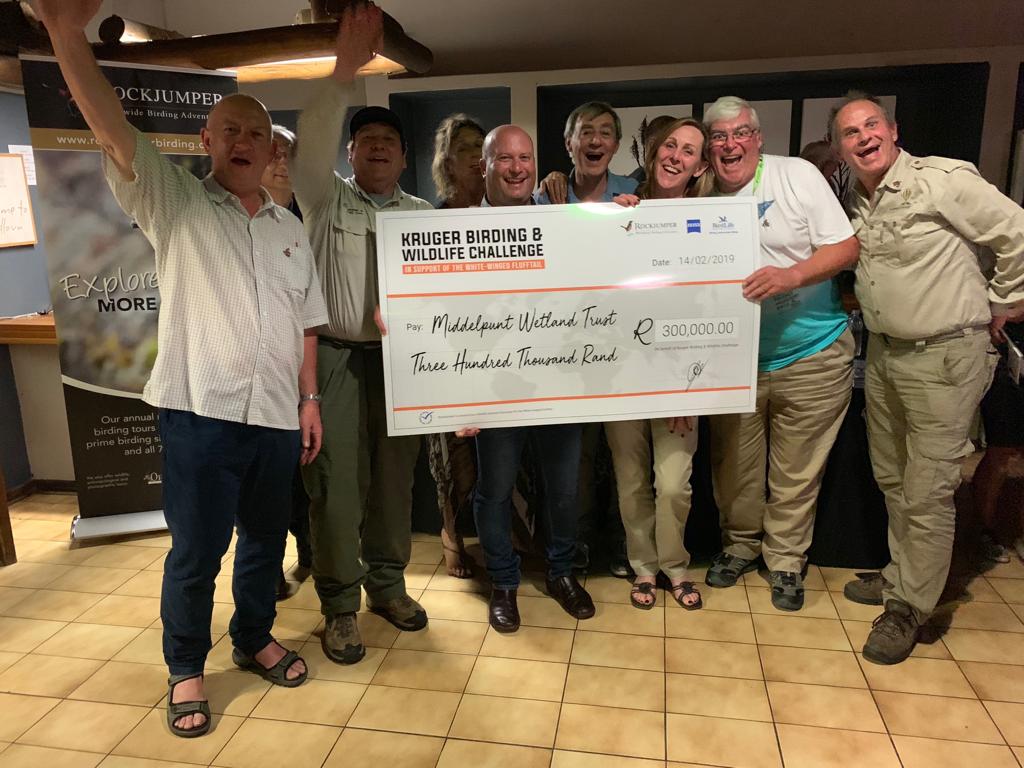The Kruger Bird and Wildlife Challenge was held in South Africa this past February. Organized by BirdLife South Africa, Middlepunt Wetland Trust and Rockjumper Birding Tours, the event was started by BirdLife International to support conservation efforts for the critically endangered white-winged flufftail (Sarothrura ayresi). This very rare African bird is found in just a few regions of Ethiopia and South Africa. Living in especially thick vegetation, it is hard to spot the bird using traditional methods. Thus there are only a few photographs of this bird species, most of which show captured specimens. Financial support is urgently needed, primarily to preserve the small bird’s remaining habitat and support local endeavors undertaken by the different organizations.
Eight teams, each comprising nine bird watchers and conservationists, headed to the event at Kruger National Park. While no white-winged flufftails reside there, the location is ideal for hosting an event of this size. Kruger National Part is one of the few remaining nature reserves on the planet where sufficient land is still available to establish a stable equilibrium between the different species. This has long since ceased to be the case in nearly all nature reserves found in central Europe due to their limited size and the use of chemicals for intensive farming in the surrounding areas. More than 500 bird and over 150 mammal species have been spotted in Kruger National Park, and the teams had to record as many of these as possible.
Over a period of nine days, the participants made their way through the entire park and spent the night at different camps. Unlike many other competitive birding events, including Champions of the Flyway held in Israel, the challenge was not just to spot the largest number of different species. Instead, each species was scored on a scale of one to three, with more points going to less common or difficult-to-find birds.
Thus the world’s biggest heron, the Goliath heron, and the large martial eagle only earned teams one point because these birds are impossible to miss, while spotting a dusky lark earned three points. The peregrine falcon, which is likewise a rare find in Kruger National Park, could also earn a team three points.

For birds commonly found in Europe during the summer months, Kruger National Park is an important destination during the winter migration. These species include the white stork, lesser spotted eagle, Eurasian hobby, barn swallow, common house martin and Alpine swift. Large numbers of one of the pretties birds in eastern Europe, the European roller, spend the winter in the park, taking advantage of the broad selection of various insects as a food source. Other avian species from up north join in, including European and blue-cheeked bee-eaters, whose colors are almost a match for the southern carmine bee-eater. Kruger Natural Park is one of the last natural refuges for vultures in Africa, especially the white-headed and lappet-faced vultures, which are endangered due to chemically contaminated animal cadavers. Conservation groups from Europe and Africa are currently trying to save these animals from extinction, primarily through efforts targeted at informing the local population. ZEISS specifically supports their efforts as part of the Champions of the Flyway event.
The team from BirdLife International together with representatives from Rockjumper Birding Tours and ZEISS won the competition by spotting 328 different species of birds, earning them 496 points. They even won in the “mammals” category by recording 64 species, giving them a total of 560 points. The team “Ayre’s Broomtails” was close behind, having spotted 318 different bird and 58 mammal species, earning them 531 points in total. The “BirdLife International” team also won the prize for discovering the rarest bird during the event, a golden pipit – a rare sight in South Africa. All the teams and assistants had the chance to see and then photograph the bird themselves.

ZEISS provided the grand prize: 10 pairs of ZEISS Terra 8×42 binoculars. The event ultimately raised over 25,000 euros to financially support the conversation of the white-winged flufftail, making this is a promising start for saving this rare bird.
About Post Author
Visits on this Page:4745



